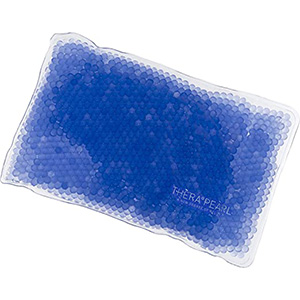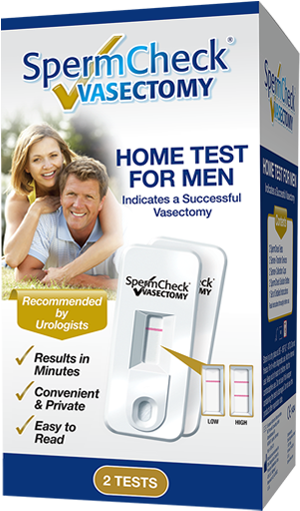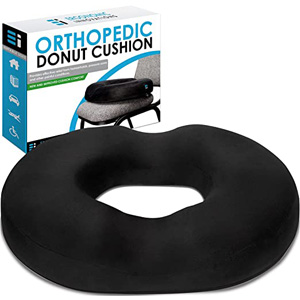Here is my consolidated and updated vasectomy story. I apologize that the story is somewhat longer than the usual submission to your site. This is because the story deals not only with vasectomy but also with post-vasectomy procedures including reversal, epididymectomy, and orchidopexy. I hope my story will be of some assistance to your readers. Thank you in advance for posting it.
Background
In 1990, at the age of 37, I had a closed-ended vasectomy after the birth of our second child. I didn’t bother researching vasectomy nor did I have any kind of in-depth or meaningful discussion about vasectomy with any of my male friends who had had a vasectomy. There was some joking and ribbing about my expected and inevitable fate, as some of these friends described it, but that was about it. In 1990 there weren’t a lot of resources on vasectomy readily available, aside from one’s doctor. Both my GP and the surgeon he referred me to gave me details of the procedure and some advice about what to expect post-op, i.e. ice and relaxation for a few days. The psychological test consisted of being asked why I wanted a vasectomy. That was it. It was all positive with no mention of any long term problems. Like most, I was surrounded by a lot of promotional hype and expectations about vasectomy. In hindsight, it is hard to believe that I made such a critical decision with only minimal concerns and checks.
The scheduling of my vasectomy was somewhat delayed. My doctor thought it best not to proceed until one of my recurring bouts of prostatitis and epididymitis was cleared up. After this was accomplished I did get the go-ahead.
The vasectomy
I wasn’t nervous or apprehensive with the lead up to my vasectomy but was somewhat that way the day of surgery, especially when I was signing in and completing the paperwork. I think it was the realization that it was actually going to happen. I settled down and felt calm after the formalities were completed and while waiting my turn, laying on a gurney outside the operating room. Unfortunately, the operating room was extremely cold. There was a lot of tugging and pulling and numerous freezings. I wasn’t prepared for how uncomfortable and at times painful, the procedure turned out to be. I did end up with extensive bruising which I guess is not unusual. However, no one had forewarned me about bruising so it came as a surprise to me. I was told by the surgeon that the procedure had been difficult. I didn’t think to ask him for any particulars in this regard as I was still feeling a bit overwhelmed by it all when I was told this in the recovery room. This particular urologist had done thousands of vasectomies and was a well-respected surgeon. Having nothing to compare my experience with I presumed I would be O.K. and that there was no need to be concerned about what he said to me.
There were the few inevitable days of discomfort that usually follow upon vasectomy. However, things didn’t end there. The discomfort turned into varying levels of pain that lasted weeks, then months, and then longer. Over this period of time I was conscious of pain throughout the day and at times during the night. Sleep became difficult. The simplest physical activities, such as walking, heightened the pain. Sometimes the pain was lightening sharp and at other times it was a dull ache. Sometimes it was in between. The surgeon who did the vasectomy was unable to provide any answers, aside from confirming that these pain levels were not the norm six months after the vasectomy.
Looking for treatment options
Four years of referrals to other urological specialists followed. I was poked, prodded, and tested over and over again. I underwent the usual conservative treatments, including nerve freezing, but to no avail. In my frustration, I decided to try to find some answers myself. I spent hours researching at a university medical library. I discovered that in 1986, the phrase, ‘late post-vasectomy pain syndrome’, was coined by a research doctor who noticed in certain vasectomized men a pattern of pain caused by an extensive epididymal blockage, congestion, and ‘epididymitis type’ conditions that were non-bacterial in nature and which didn’t respond to antibiotics. This was my situation. The intriguing question was how come no one seemed to be aware of this research, especially when the research pegged the number of vasectomized men experiencing long-term pain or discomfort after vasectomy at 1% to 6%, depending on pain classification?
I took the clinical studies to my GP who willingly discussed them with me. A reversal was decided upon. The reason behind the reversal, namely, the relief of my PVP (post-vasectomy pain), was not disclosed to the surgeon to whom I was referred. There was fear that the surgeon might refuse to do the surgery as reversal surgery for PVP was not a widely recognized course of action for PVP at that time, (clinically yes, but within the day to day practice of medicine, no). In fact, the recognition of PVP by the medical profession was just beginning to take hold. It seems that today, the specialists who do reversals for fertility restoration are those within the medical profession who are most familiar with PVP. A recent sampling of a few of these specialists by a member of a PVP support organization to which I belong found out that of those asked, most had done approximately thirty to forty reversals each, for PVP.
The reversal, epididymectomy and orchidopexy
There was noticeable pain relief immediately following my reversal. This was evident even during the post-op recovery period. Thereafter, some minor and inconsequential discomfort remained. This wonderful hiatus of being largely pain-free lasted for several years. Then the intense pain and discomfort that I had experienced previously returned without warning and with unexpected swiftness.
In an attempt to rectify this, I underwent a right-sided epididymectomy in 2001. The chance of successful pain relief was 30%. However, I felt I had no option but to have the surgery. Pain levels were adversely affecting my quality of life in a major way, once again.
Two years later the same drastic situation developed on the left side. A left-sided epididymectomy and an orchidopexy were done. The recovery period for an epididymectomy is usually one week in bed and four to six weeks of an extended recovery. The surgeon who did the epididymectomies told me that the scar tissue on the left side was more extensive than it had been on the right side and as a result, the recovery was going to take longer this time. It was seven weeks before the sexual activity of any sort could be undertaken and twelve weeks before I could resume any physical activities beyond that of everyday living. The orchidopexy (anchoring of the testicle) was necessary because removal of the vas deferens from the spermatic cord right up to the inguinal canal, together with the removal of the epididymis makes the spermatic cord susceptible to turning on itself (torsion), thus cutting off the blood supply and causing the testicle to die. In comparison to epididymectomy, recovery from the reversal was much easier and quicker. I was fully recovered from the reversal three weeks post-op, inclusive of four to five days in bed. As a note, the surgeon who did the epididymectomies was the first doctor to admit that I had PVP. He also told me that he takes on about one new PVP referral patient every three to four months.
For those of you who are curious, the semen tests following my vasectomy proved me sterile. I welcomed the news as the eight week period between the vasectomy and the ‘all clear’ was the only time in my life, to that point, that the use of condoms was necessary. A cumbersome and desensitizing inconvenience for sure. I came away with a better understanding as to why guys who use condoms for years are amongst the most ardent supporters of vasectomy. Semen testing after the reversal did prove me fertile once again. This testing was more embarrassing as it had to be done on-site and handed over immediately, due to the distance in time I was from the clinic (over one hour away). My wife returned to the pill and not long afterward underwent a hysterectomy for corrective reasons. The second epididymectomy rendered me sterile, and this is how I remain today. I got the usual end result of a vasectomy but in a roundabout and tortuous way.
Current situation
The surgeries have not ridded me of the aching, the discomfort, and the pain I often get in the testicular and groin areas. However, I consider the surgeries worthwhile and I would do them again for the very reason that my present levels of aching, discomfort, and pain are far less than they were prior to each of the surgeries. Only on odd occasions do I have to take over the counter pain medication. Fortunately, I have a high pain tolerance. I can’t imagine how one endures this condition with a lesser pain tolerance level or how one could deal with PVP if their job was physical in nature. Certain physical activities involving stretching, crouching, extensive exertion, some sexual activity, together with most sports activities, cause levels of discomfort and pain that can range from the uncomfortable to the unbearable. I have an office job, so most days I only have to deal with on-again-off-again dull aches. I wear well-constructed support (solid elasticized material/no mesh) for any strenuous activity and good support briefs at most other times. I also need to wear support while sleeping. I cannot wear boxers, boxer-style swim trunks, and underwear briefs with insufficient support. Dull aches will start immediately. On occasion, I alter or cut back on certain physical activities either in response to discomfort or to avoid it. The supports I use don’t always prevent discomfort and pain, but they do help relieve it, given a few days. I am told by the medical profession that this is as good as it is going to get for me.
The power of mind over matter also helps me deal with my PVP. I put my thoughts and energies into a PVP support organization. This enables me to turn the negative energies caused by the feelings of frustration and anger that come with PVP, into positive energies, used for bringing about positive results. It is rewarding to think that I and others in our PVP association can reassure men with PVP that they are not alone and that they are not without support and empathy. We can also assure them that there are resources out there, albeit limited, for dealing with PVP.
As difficult as it may be, I challenge all men with PVP to talk about their PVP. It is a private matter, for sure, and together with vasectomy, not usually a matter of social conversation, let alone public discourse. Over the last few years, I have spoken to many men about their PVP. To the best of my knowledge, there is yet to be one of them to post their story on this site, even though I have encouraged them to do so, and in spite of the anonymity, this site and the internet allows. This reinforces how difficult it is to discuss and deal with the subject matter of PVP. Aside from the small number of PVP sufferers, a medical profession slow to recognize PVP, diagnostic difficulties in identifying PVP, and male attitudes when it comes to health issues, the very private nature of PVP explains to a large extent why so little is heard about PVP.
I know from personal experience that being pro-active won’t necessarily give a PVP sufferer the closure on vasectomy that guys with successful vasectomies have. Neither will it give the PVP sufferer the ability to see vasectomy in a light-hearted way or be able to joke and rib friends about ‘the vasectomy experience’. A man with PVP may never have this closure nor this ability. However, being pro-active will help contribute to greater public knowledge about PVP and it will serve to reinforce the fact that PVP, although affecting only a small number of men, is a force to be reckoned with and will remain such until we have better ways of assessing in advance of vasectomy who will develop PVP, and until we discover better and more effective ways of treating PVP. Until these things happen PVP will remain a linkage to vasectomy that will be problematic not only for those with PVP, and their doctors, but also for those wishing to undertake, promote, and enjoy the benefits of vasectomy.
Submitted by Greg
Recommended products for recovery
We only recommend products we think are useful for our readers. If you make a purchase, we may earn a small commission. JockstrapsPapi Men’s Cotton Jock Strap 3-Pack
JockstrapsPapi Men’s Cotton Jock Strap 3-Pack Ice packsTheraPearl Ice Pack with Gel Beads
Ice packsTheraPearl Ice Pack with Gel Beads Home Vasectomy TestSpermCheck Vasectomy Test Kit
Home Vasectomy TestSpermCheck Vasectomy Test Kit Donut-shaped pillowErgonomic Innovations Orthopaedic Seat
Donut-shaped pillowErgonomic Innovations Orthopaedic Seat